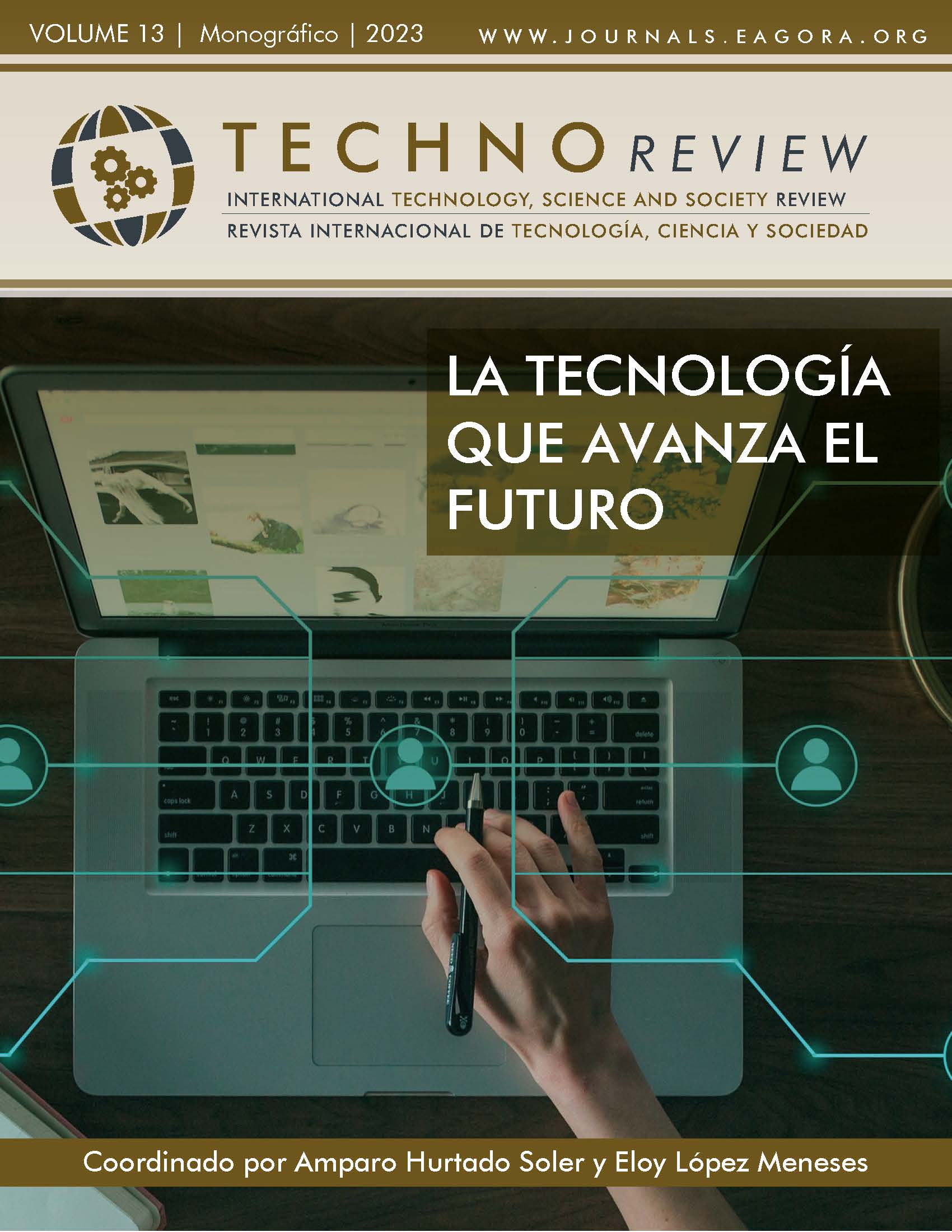Citizen Science and Open Data in an Artistic-Technological Project
DOI:
https://doi.org/10.37467/revtechno.v13.4975Keywords:
Technology, Gamification, Open data, Art, Engineering, Citizen ScienceAbstract
Data is essential in decision-making, so it is important that citizens understand the value of open data. With the aim of innovating and promoting the use of open data, the artistic-technological project "Falla Inmaterial" is presented, with which scientific dissemination is carried out through massive festivals such as Las Fallas. This is an initiative aligned with citizen science that goes beyond the Fallas festivities and is conceived as a gamification tool with which to show social applications of engineering and data science.
References
Acevedo, J. A., Vázquez, A., & Manassero, M. A. (2003). Papel de la educación CTS en una alfabetización científica y tecnológica para todas las personas. Revista electrónica de enseñanza de las ciencias, 2(2), 80-111. http://reec.webs.uvigo.es/volumenes/volumen2/REEC_2_2_1.pdf
Bonney, R., Ballard, H., Jordan, R., McCallie, E., Phillips, T., Shirk, J., & Wilderman, C. (2009). Public Participation in Scientific Research: Defining the Field and Assessing Its Potential for Informal Science Education. A CAISE Inquiry Group Report. Center for Advancement of Informal Science Education (CAISE). https://files.eric.ed.gov/fulltext/ED519688.pdf
Bonney, R., Phillips, T. B., Ballard, H. L., & Enck, J. W. (2016). Can citizen science enhance public understanding of science? Public Understanding of Science, 25(1), 2-16. https://doi.org/10.1177/0963662515607406
Bybee, R.W. (1997). Achieving scientific literacy: From purposes to practices. Heinemann.
Curtis, V. (2018). Online citizen science and the widening of academia. Palgrave Macmillan.
Domènech-Casal J., Lope S., Mora L. (2019) Qué proyectos STEM diseña y qué dificultadesexpresa el profesorado de secundaria sobre Aprendizaje Basado en Proyectos. Revista Eureka sobre Enseñanza y Divulgación de las Ciencias, 16(2), 2203. https://doi.org/10.25267/Rev_Eureka_ensen_divulg_cienc.2019.v16.i2.2203
Eisele-Dyrli, K. (2011). Mobile goes mainstream. District Administration, 47(2), 46.
López Iñesta, E. (2017). Aprendizaje de similitudes entre pares de objetos mediante clasificación supervisada. [Tesis Doctoral]. Universitat de València. https://roderic.uv.es/handle/10550/61001
Kay, R. H., & LeSage, A. (2009). A strategic assessment of audience response systems used in higher education. Australasian Journal of Educational Technology, 25(2). https://doi.org/10.14742/ajet.1152
Martín-Gordillo, M. (2003). Metáforas y simulaciones: alternativas para la didáctica y la enseñanza de las ciencias. Revista Electrónica de Enseñanza de las Ciencias, 2(3), 377-398. http://reec.educacioneditora.net/volumenes/volumen2/REEC_2_3_10.pdf
Martínez-Ruiz, F., Bautista-Arnedo, M., & del-Pino-Ruiz, J. (2005). Educación científica, sociedad y televisión. Comunicar, 25. https://doi.org/10.3916/C25-2005-203
Melhuish, K. and Falloon, G. (2010). Looking to the future: M-learning with the ipad computers in New Zealand schools. Learning, Leading, Technology, 22(3), 1 – 16. https://researchcommons.waikato.ac.nz/handle/10289/5050
Serrano-Sanz, F., Holocher-Ertl, T., Kieslinger, B., Sanz-García, F. & Silva, C.G. (2014). White paper on citizen science for Europe. https://cutt.ly/D8vHwAE
Downloads
Published
Issue
Section
License
All articles are published under an Attribution-NoDerivatives 4.0 International (CC BY-ND 4.0) license. Authors retain copyright over their work.

